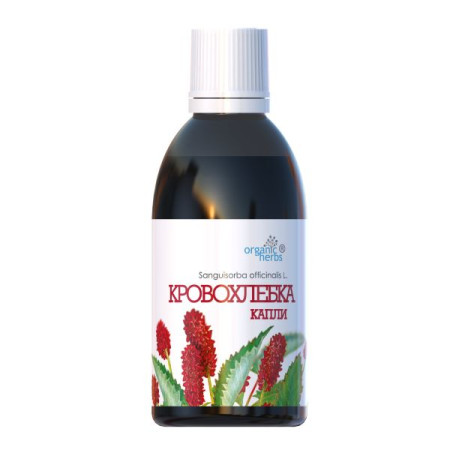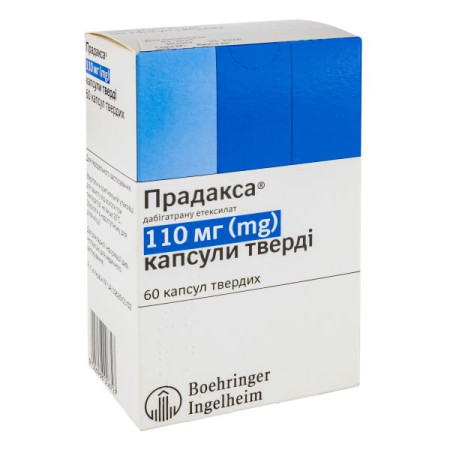Servonex film-coated tablets 5 mg blister No. 28

Instructions for use Servonex film-coated tablets 5 mg blister No. 28
Composition
active ingredient: donepezil;
1 tablet contains donepezil hydrochloride 5 mg or 10 mg;
excipients: lactose monohydrate, microcrystalline cellulose, copovidone K 28, pregelatinized starch, magnesium stearate, Opadry II Wnite 31G58920 (talc, titanium dioxide (E 171), hypromellose, polyethylene glycol, lactose monohydrate).
Dosage form
Film-coated tablets.
Pharmacotherapeutic group
Drugs for use in dementia. Cholinesterase inhibitors. ATC code N06D A02.
Pharmacological properties
Pharmacodynamics. A selective and reversible inhibitor of acetylcholinesterase, the main type of cholinesterase in the brain. By inhibiting cholinesterase in the brain, donepezil blocks the breakdown of acetylcholine, which carries out the transmission of nerve excitation in the CNS. Donepezil inhibits acetylcholinesterase more than 1000 times more potently than butyrylcholinesterase, which is found in structures located mostly outside the central nervous system.
After a single dose of donepezil at doses of 5 mg or 10 mg, the degree of inhibition of acetylcholinesterase activity is estimated in erythrocyte membranes and is 63.6% and 77.3%, respectively.
Inhibition of acetylcholinesterase in erythrocytes by donepezil correlates with changes in the ADAS-cog scale (Alzheimer's Disease Assessment Scale for Cognitive Function).
Pharmacokinetics. Maximum plasma concentrations peak approximately 3-4 hours after dosing. Plasma concentrations and area under the pharmacokinetic curve increase in proportion to dose. The elimination half-life is approximately 70 hours, so repeated once-daily dosing gradually leads to steady-state concentrations, which are reached within 3 weeks of starting therapy. At steady-state, plasma concentrations of donepezil hydrochloride and the corresponding pharmacodynamic activity vary little during the day. Food does not affect the absorption of donepezil hydrochloride.
Donepezil is approximately 95% bound to plasma proteins. The distribution of donepezil in various tissues is not well understood. Theoretically, donepezil and its metabolites can remain in the body for up to 10 days.
Metabolism/Excretion: Donepezil hydrochloride is excreted unchanged in the urine and undergoes biotransformation by the cytochrome P450 system to form numerous metabolites, some of which have not been identified.
After a single administration of 5 mg of 14C-labeled donepezil hydrochloride, the plasma fraction of unchanged donepezil hydrochloride is 30% of the administered dose, 6-O-desmethyldonepezil is 11% (the only metabolite with similar activity to donepezil hydrochloride), donepezil-cis-N-oxide is 9%, 5-O-desmethyldonepezil is 7%, and the glucuronide conjugate of 5-O-desmethyldonepezil is 3%. Approximately 57% of the administered radioactive dose was recovered in the urine (17% as unchanged donepezil) and 14.5% was recovered in the feces, indicating that biotransformation and urinary excretion are the primary routes of elimination. There is no information on the possibility of enterorenal recirculation of donepezil hydrochloride and/or any of its metabolites. The decline in plasma concentrations of donepezil hydrochloride occurs with a half-life of approximately 70 hours.
Mean plasma levels of donepezil in patients are similar to those in healthy young volunteers. Mild to moderate hepatic impairment and renal impairment do not significantly affect donepezil clearance.
Pharmaceutical characteristics.
Main physicochemical properties: white or almost white, round, biconvex tablets, coated, smooth on both sides.
Indication
Symptomatic treatment of mild to moderate Alzheimer's dementia.
Contraindication
Contraindicated in patients with known hypersensitivity to donepezil hydrochloride, piperidine derivatives, or any of the excipients of the drug.
Interaction with other medicinal products and other types of interactions
Donepezil does not inhibit the metabolism of theophylline, warfarin, cimetidine, digoxin. Concomitant administration of digoxin, cimetidine does not affect the metabolism of donepezil. The cytochrome P450 isoenzyme 3A4 and, to a lesser extent, 2D6 are involved in the metabolism of donepezil. Ketoconazole and quinidine are inhibitors of these isoenzymes, due to which they inhibit the metabolism of donepezil. Other drugs that inhibit these enzymes, such as itraconazole, erythromycin, fluoxetine, may also affect the metabolism of donepezil. In healthy volunteers, ketoconazole increased the plasma concentration of donepezil by 30%. However, this is unlikely to affect the clinical effects.
Concomitant administration of donepezil does not affect the pharmacokinetics of ketoconazole.
Enzyme inducers such as rifampicin, phenytoin, carbamazepine and ethanol may decrease donepezil levels. However, the extent of the decrease is unclear, so these drugs should be used with caution when used concomitantly.
Cases of atypical changes in blood pressure and heart rate have been described when other cholinomimetics and quaternary anticholinergics, such as glycopyrrolate, were used concomitantly with donepezil.
Application features
The effectiveness of Servonex in patients with severe Alzheimer's dementia, other types of dementia, and other types of memory impairment (e.g., age-related cognitive decline) has not been studied.
As a cholinesterase inhibitor, Servonex® may potentiate succinylcholine-type muscle relaxation during anesthesia. Cholinesterase inhibitors may produce vagotonic effects on heart rate (e.g., bradycardia). The possibility of such disturbances is of particular importance in patients with sick sinus syndrome or other supraventricular conduction disorders such as sinoatrial or atrioventricular block.
Patients at risk of developing ulcers, such as those with a history of peptic ulcer disease or those receiving nonsteroidal anti-inflammatory drugs (NSAIDs), should be closely monitored. However, in studies with donepezil, there was no increase in the incidence of ulcers or gastrointestinal bleeding compared with placebo.
It has been suggested that anticholinesterase drugs may cause acute urinary retention, although clinical studies have not shown this effect.
Anticholinesterase drugs can also cause generalized seizures. However, the occurrence of seizures during the period of taking the drug may be a manifestation of Alzheimer's disease. Given the cholinomimetic effect of cholinesterase inhibitors, donepezil should be prescribed with caution to patients with bronchial asthma or obstructive pulmonary disease.
The use of the drug with other acetylcholinesterase inhibitors, agonists or antagonists of the cholinergic system should be avoided.
The drug contains lactose, therefore patients with rare hereditary forms of galactose intolerance, lactase deficiency or glucose-galactose malabsorption syndrome should not take the drug.
The ability to influence the reaction speed when driving or working with other mechanisms
Alzheimer's dementia may be accompanied by impaired ability to drive and use complex machinery. In addition, donepezil, mainly at the beginning of treatment or when the dose is increased, may cause increased fatigue, dizziness and seizures. The question of driving and using complex machinery should be decided by the doctor after assessing the individual patient's reaction.
Method of administration and doses
The drug is prescribed to adults at an initial dose of 5 mg once a day. Servonex® is taken orally in the evening before bedtime. The initial dose of 5 mg once a day should be continued for 1 month until steady-state concentrations of donepezil hydrochloride are achieved and an early therapeutic effect is determined. After clinical evaluation of one month of treatment at a dose of 5 mg once a day, the dose of Servonex may be increased to 10 mg once a day. The maximum recommended daily dose is 10 mg. The use of doses exceeding 10 mg once a day has not been studied.
Treatment should be initiated and continued under the supervision of a physician experienced in the diagnosis and management of Alzheimer's disease. The disease should be diagnosed in accordance with generally accepted guidelines (e.g. DSM IV or ICD 10 - International Classification of Diseases, 10th edition).
Donepezil therapy can only be started if there is a person who cares for the patient and will constantly monitor the patient's taking the tablets.
Maintenance therapy can be continued as long as the therapeutic effect of the drug is maintained. In this regard, the effect of donepezil should be regularly assessed. The advisability of stopping treatment should be considered when its effect disappears. Individual response to donepezil cannot be predicted.
After discontinuation of treatment, the beneficial effects of Servonex gradually decrease.
Renal and hepatic impairment: Standard doses of the drug can be used to treat patients with renal impairment or mild to moderate hepatic impairment, as the clearance of donepezil hydrochloride is not altered in these conditions.
Adverse reactions
The main adverse reactions were diarrhea, muscle cramps, fatigue, nausea, vomiting and insomnia. The criteria for assessing the frequency of adverse reactions are: very common (≥ 1/10), common (≥ 1/100, < 1/10), uncommon (≥ 1/1000, < 1/100), rare (> 1/10,000, < 1/1000), very rare (< 1/10,000, including isolated reports).
Infectious diseases: common – runny nose.
Metabolism and metabolism: common - anorexia.
On the part of the psyche: common - hallucinations, anxiety, aggressive behavior.
Nervous system: common - fainting, dizziness, insomnia; uncommon - epileptic seizure; rare - extrapyramidal symptoms.
Cardiac disorders: uncommon – bradycardia; rare – sinoatrial and atrioventricular block.
On the part of the digestive tract: very common - nausea, diarrhea; common - vomiting, dyspepsia; uncommon - gastric and duodenal ulcers, gastrointestinal bleeding.
Skin and subcutaneous tissue disorders: common – rash, itching.
Musculoskeletal system: common - muscle cramps.
Renal and urinary disorders: common – urinary incontinence.
General manifestations: very common – headache; common – fatigue, pain.
Laboratory data: uncommon – slight increase in muscle creatine phosphokinase (CPK).
Injuries and poisoning: common – trauma.
Overdose
Overdose of cholinesterase inhibitors can lead to cholinergic crisis, characterized by severe nausea, vomiting, salivation, increased sweating, bradycardia, hypotension, respiratory depression, collapse and convulsions. Progressive muscle weakness is possible and can be fatal if respiratory muscles are affected.
Symptomatic treatment is indicated. As an antidote to Servonex in case of overdose, anticholinergic agents of the tertiary amine group (atropine) can be used. Intravenous administration of atropine sulfate is recommended, the dose of which is titrated to achieve the effect: the initial dose is 1-2 mg intravenously, then the dose is selected depending on the clinical effect. With the simultaneous use of other cholinomimetics in combination with anticholinergic agents of the quaternary ammonium compounds group (glycopyrrolate), atypical changes in blood pressure and heart rate have been noted. It is not known whether donepezil hydrochloride and/or its metabolites are removed during dialysis (hemodialysis, peritoneal dialysis or hemofiltration).
Use during pregnancy or breastfeeding. Servonex® should not be used during pregnancy. It is not known whether donepezil hydrochloride is excreted in human milk; studies in breastfeeding women have not been conducted. Therefore, women taking donepezil should discontinue breastfeeding.
Children. Servonex® is not recommended for use in children, as the safety of the drug has not been studied in children.
Expiration date
2 years.
Storage conditions
Store at a temperature not exceeding 25 ° C. Keep out of the reach of children.
Packaging
14 tablets in a blister. 2 blisters in a cardboard box.
10 tablets in a blister. 3 blisters in a cardboard box.
Vacation category
According to the recipe.
Producer
KUSUM HEALTHCARE PVT. LTD.
KUSUM HEALTHCARE PVT. LTD.
Location
SP 289 (A), RIICO Indl. Area, Chopanki, Bhiwadi (Raj.), India.
SP 289 (A), RIICO Indl. Area, Chopanki, Bhiwadi (Raj.), India.
There are no reviews for this product.
There are no reviews for this product, be the first to leave your review.
No questions about this product, be the first and ask your question.













